-
 Bitcoin
Bitcoin $117900
0.31% -
 Ethereum
Ethereum $3766
0.28% -
 XRP
XRP $3.176
-0.31% -
 Tether USDt
Tether USDt $1.000
0.00% -
 BNB
BNB $795.6
1.51% -
 Solana
Solana $186.8
-1.09% -
 USDC
USDC $0.9999
-0.01% -
 Dogecoin
Dogecoin $0.2353
-1.33% -
 TRON
TRON $0.3226
1.49% -
 Cardano
Cardano $0.8172
-1.08% -
 Sui
Sui $4.178
3.06% -
 Hyperliquid
Hyperliquid $43.05
-3.39% -
 Stellar
Stellar $0.4367
-0.57% -
 Chainlink
Chainlink $18.62
1.47% -
 Hedera
Hedera $0.2828
6.63% -
 Bitcoin Cash
Bitcoin Cash $584.7
5.65% -
 Avalanche
Avalanche $24.81
2.53% -
 Litecoin
Litecoin $112.8
-0.88% -
 UNUS SED LEO
UNUS SED LEO $8.975
-0.08% -
 Shiba Inu
Shiba Inu $0.00001395
-1.07% -
 Toncoin
Toncoin $3.285
-1.05% -
 Ethena USDe
Ethena USDe $1.001
0.01% -
 Polkadot
Polkadot $4.123
0.76% -
 Uniswap
Uniswap $10.49
-0.18% -
 Monero
Monero $326.5
0.14% -
 Dai
Dai $0.9999
-0.02% -
 Bitget Token
Bitget Token $4.576
0.34% -
 Pepe
Pepe $0.00001247
-1.55% -
 Cronos
Cronos $0.1400
3.77% -
 Aave
Aave $295.1
-0.73%
How many days is used for the deviation rate BIAS? How to determine the short-term critical value?
BIAS in crypto trading measures price deviation from moving averages, helping identify overbought/oversold conditions for better trading decisions.
Jun 10, 2025 at 01:42 pm
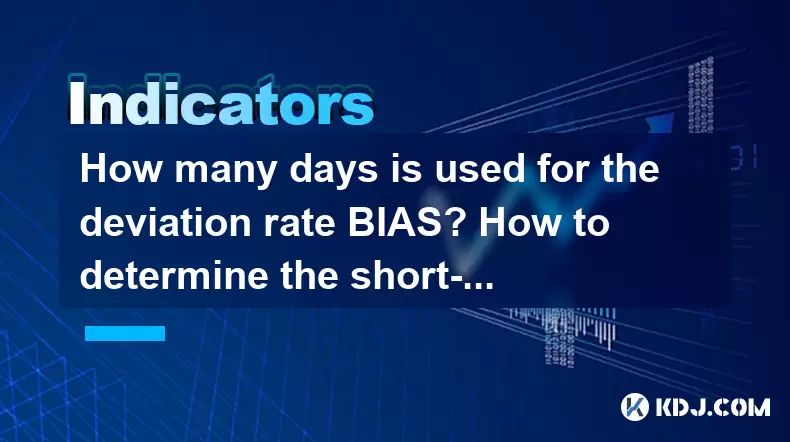
Introduction to BIAS in Cryptocurrency Trading
In the realm of cryptocurrency trading, the Deviation Rate (BIAS) is a key technical indicator used to measure the degree to which the current price of an asset deviates from its moving average. This indicator helps traders identify potential overbought or oversold conditions, thereby guiding their trading decisions. The number of days used for calculating BIAS varies depending on the trader's strategy, but common periods include 5, 10, and 20 days. Understanding how to determine the short-term critical value of BIAS is essential for effective trading.
Calculating BIAS
The calculation of BIAS involves a straightforward formula:
[ \text{BIAS} = \frac{\text{Current Price} - \text{Moving Average}}{\text{Moving Average}} \times 100 ]
Here, the Moving Average can be the Simple Moving Average (SMA) or the Exponential Moving Average (EMA), depending on the trader's preference. The number of days used for the moving average directly impacts the sensitivity of the BIAS indicator. A shorter period, such as 5 days, will make the BIAS more responsive to price changes, while a longer period, like 20 days, will smooth out the fluctuations and provide a more stable measure.
Common Periods for BIAS Calculation
Traders often use different periods for BIAS to suit their trading strategies. The most common periods include:
- 5-day BIAS: Suitable for short-term traders who want to capture quick market movements.
- 10-day BIAS: A balanced approach that can be used by traders looking at both short-term and medium-term trends.
- 20-day BIAS: Preferred by traders with a longer-term perspective, as it provides a more stable indicator less influenced by daily price volatility.
Each of these periods offers a different perspective on market conditions, and traders should choose the one that aligns best with their trading goals and risk tolerance.
Determining the Short-Term Critical Value of BIAS
The short-term critical value of BIAS is crucial for traders to make informed decisions. This value helps identify when an asset is potentially overbought or oversold. To determine the short-term critical value, traders can follow these steps:
- Analyze Historical Data: Look at historical BIAS values for the chosen period. Identify levels at which the price tended to reverse or correct.
- Set Thresholds: Based on historical data, set thresholds for overbought and oversold conditions. Commonly, a BIAS above +5% might indicate an overbought condition, while a BIAS below -5% might suggest an oversold condition.
- Test and Adjust: Use backtesting to see how these thresholds perform over past data. Adjust the thresholds if necessary to improve the accuracy of the signals.
Practical Example of BIAS Calculation
To illustrate how BIAS is calculated and used, let's consider a practical example. Suppose a trader is monitoring the price of Bitcoin (BTC) and wants to use a 10-day BIAS. The current price of BTC is $30,000, and the 10-day SMA is $29,500. The BIAS can be calculated as follows:
[ \text{BIAS} = \frac{30,000 - 29,500}{29,500} \times 100 = \frac{500}{29,500} \times 100 \approx 1.69\% ]
In this example, the BIAS is positive, indicating that the current price is above the 10-day moving average. If the trader's short-term critical value is set at +5%, they would not consider the market to be overbought at this point.
Using BIAS in Trading Strategies
BIAS can be integrated into various trading strategies to enhance decision-making. Here are some ways traders use BIAS:
- Trend Confirmation: Traders use BIAS to confirm the direction of the trend. A positive BIAS in an uptrend and a negative BIAS in a downtrend can reinforce the trader's belief in the current market direction.
- Reversal Signals: When BIAS reaches extreme levels (either overbought or oversold), it can signal potential reversals. Traders might use this information to enter or exit trades.
- Divergence: Traders also look for divergences between price and BIAS. For instance, if the price is making new highs but BIAS is not, it could indicate weakening momentum and a potential reversal.
Combining BIAS with Other Indicators
To increase the reliability of trading signals, BIAS is often used in conjunction with other technical indicators. Some popular combinations include:
- BIAS and Relative Strength Index (RSI): RSI measures the speed and change of price movements. When both BIAS and RSI indicate overbought or oversold conditions, it can provide a stronger signal.
- BIAS and Moving Average Convergence Divergence (MACD): MACD is used to identify trend direction and momentum. Combining BIAS with MACD can help traders confirm trend strength and potential reversals.
- BIAS and Bollinger Bands: Bollinger Bands measure volatility and provide a relative definition of high and low prices. When BIAS is used with Bollinger Bands, traders can identify overbought and oversold conditions more accurately.
FAQs
Q1: Can BIAS be used for all cryptocurrencies?
A1: Yes, BIAS can be applied to any cryptocurrency. However, the effectiveness of BIAS may vary depending on the liquidity and volatility of the specific cryptocurrency. Highly volatile assets might require adjustments to the BIAS thresholds to account for larger price swings.
Q2: How often should the BIAS be recalculated?
A2: The frequency of BIAS recalculation depends on the trading strategy. For short-term traders, recalculating BIAS daily or even intraday can be beneficial. Long-term traders might recalculate BIAS weekly or monthly to align with their broader market perspective.
Q3: Is it possible to automate BIAS calculations?
A3: Yes, BIAS calculations can be easily automated using trading software and platforms that support custom indicators. Many platforms allow traders to input the formula and set the desired period, automatically updating the BIAS values as new data comes in.
Q4: How does the choice of moving average affect BIAS?
A4: The choice between SMA and EMA for the moving average in BIAS calculations impacts the indicator's responsiveness. SMA provides a smoother line, making BIAS less sensitive to short-term price fluctuations. EMA, on the other hand, gives more weight to recent prices, making BIAS more responsive to current market conditions. Traders should choose the moving average type that best fits their trading style and the asset's price behavior.
Disclaimer:info@kdj.com
The information provided is not trading advice. kdj.com does not assume any responsibility for any investments made based on the information provided in this article. Cryptocurrencies are highly volatile and it is highly recommended that you invest with caution after thorough research!
If you believe that the content used on this website infringes your copyright, please contact us immediately (info@kdj.com) and we will delete it promptly.
- Cryptos to Watch in 2025: Punisher Coin, Chainlink, and the Altcoin Arena
- 2025-07-27 18:30:13
- Bitcoin, Altcoins, Rebound: Navigating the Crypto Comeback Trail
- 2025-07-27 18:30:13
- Ethereum, Bitcoin, and Altcoins: A Shift in Crypto Tides?
- 2025-07-27 19:10:13
- Windtree Therapeutics' Bold BNB Strategy: A $520 Million Crypto Play
- 2025-07-27 19:10:13
- Solana, Staking, and Unilabs: What's the Buzz in the Crypto Space?
- 2025-07-27 16:50:13
- VeChain, HBAR, Remittix: Navigating the Crypto Landscape in 2025
- 2025-07-27 17:10:12
Related knowledge
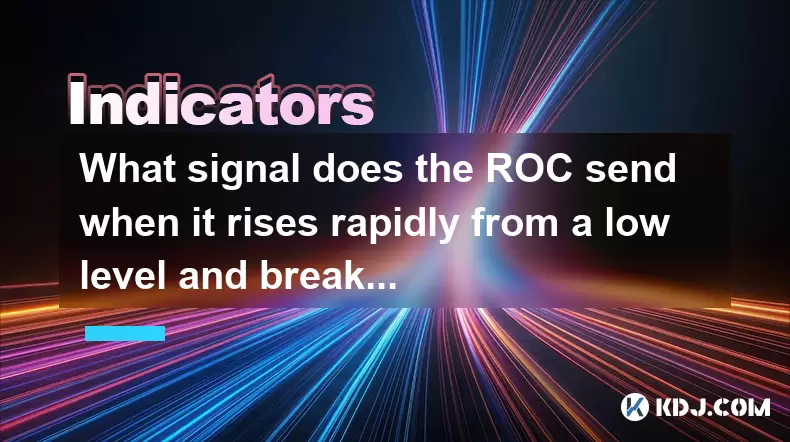
What signal does the ROC send when it rises rapidly from a low level and breaks through the zero axis?
Jul 27,2025 at 10:15am
Understanding the Rate of Change (ROC) IndicatorThe Rate of Change (ROC) is a momentum-based oscillator used in technical analysis to measure the perc...
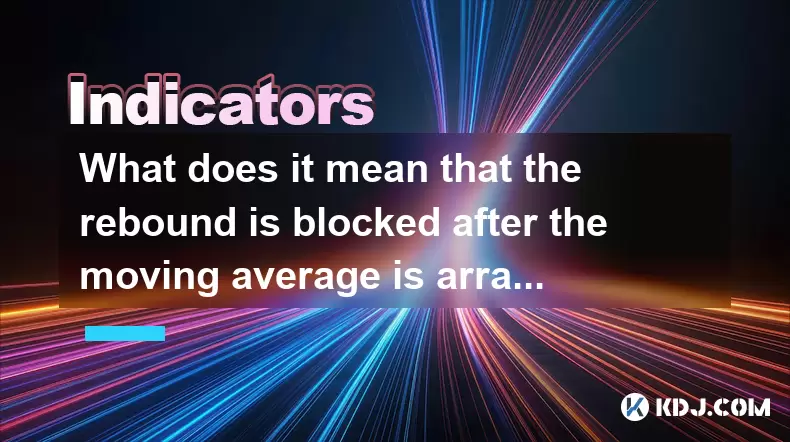
What does it mean that the rebound is blocked after the moving average is arranged in a short position for the first time?
Jul 26,2025 at 10:51am
Understanding the Short-Term Moving Average ConfigurationWhen traders refer to a 'short position arrangement' in moving averages, they are describing ...
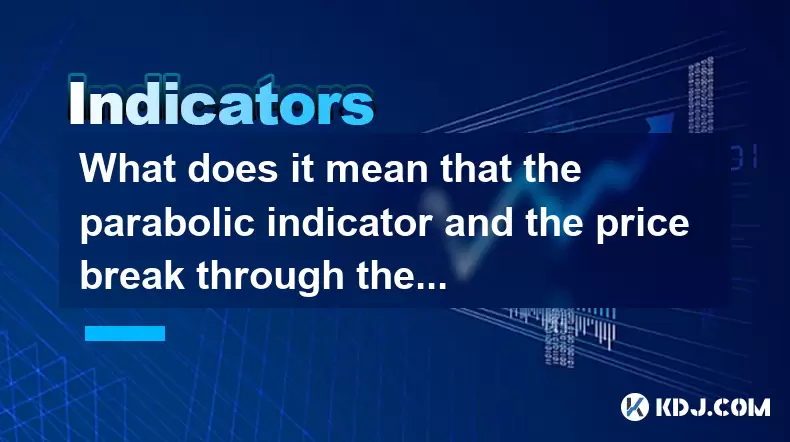
What does it mean that the parabolic indicator and the price break through the previous high at the same time?
Jul 26,2025 at 07:22pm
Understanding the Parabolic Indicator (SAR)The Parabolic SAR (Stop and Reverse) is a technical analysis tool developed by J. Welles Wilder to identify...
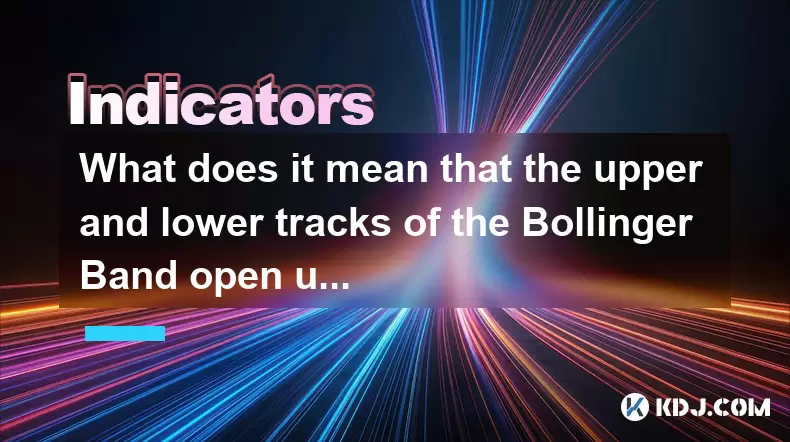
What does it mean that the upper and lower tracks of the Bollinger Band open upward at the same time?
Jul 27,2025 at 02:49pm
Understanding the Bollinger Band StructureThe Bollinger Band is a widely used technical analysis tool developed by John Bollinger. It consists of thre...
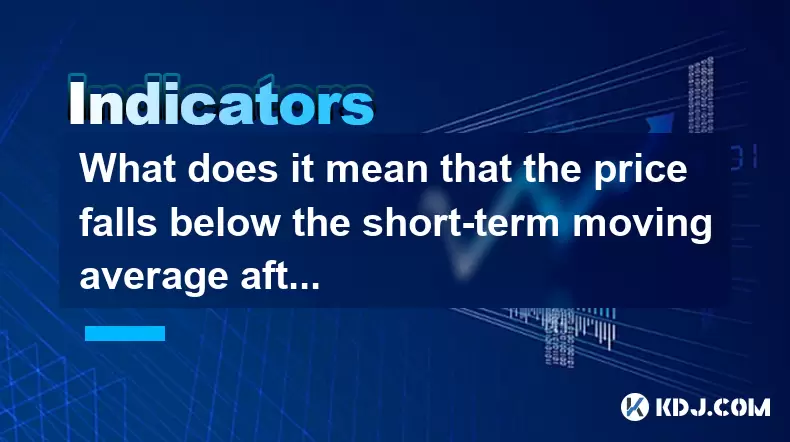
What does it mean that the price falls below the short-term moving average after the RSI top divergence?
Jul 26,2025 at 11:01pm
Understanding RSI Top Divergence in Cryptocurrency TradingThe Relative Strength Index (RSI) is a momentum oscillator widely used in cryptocurrency tra...
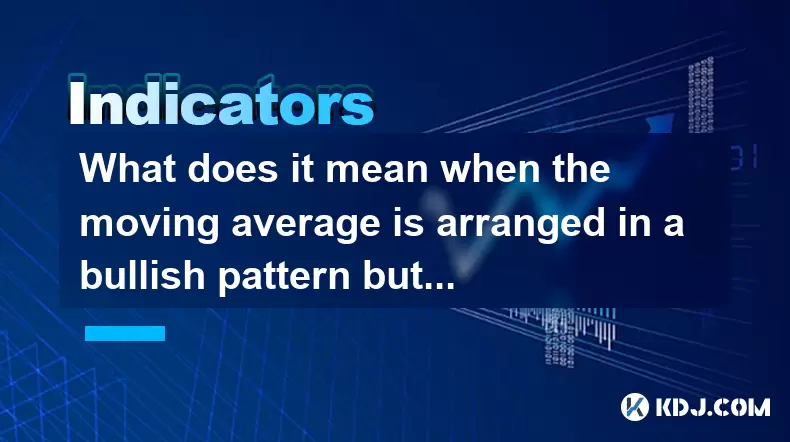
What does it mean when the moving average is arranged in a bullish pattern but the MACD bar is shortened?
Jul 27,2025 at 06:07am
Understanding the Bullish Moving Average PatternWhen traders observe a bullish moving average pattern, they typically refer to a configuration where s...

What signal does the ROC send when it rises rapidly from a low level and breaks through the zero axis?
Jul 27,2025 at 10:15am
Understanding the Rate of Change (ROC) IndicatorThe Rate of Change (ROC) is a momentum-based oscillator used in technical analysis to measure the perc...

What does it mean that the rebound is blocked after the moving average is arranged in a short position for the first time?
Jul 26,2025 at 10:51am
Understanding the Short-Term Moving Average ConfigurationWhen traders refer to a 'short position arrangement' in moving averages, they are describing ...

What does it mean that the parabolic indicator and the price break through the previous high at the same time?
Jul 26,2025 at 07:22pm
Understanding the Parabolic Indicator (SAR)The Parabolic SAR (Stop and Reverse) is a technical analysis tool developed by J. Welles Wilder to identify...

What does it mean that the upper and lower tracks of the Bollinger Band open upward at the same time?
Jul 27,2025 at 02:49pm
Understanding the Bollinger Band StructureThe Bollinger Band is a widely used technical analysis tool developed by John Bollinger. It consists of thre...

What does it mean that the price falls below the short-term moving average after the RSI top divergence?
Jul 26,2025 at 11:01pm
Understanding RSI Top Divergence in Cryptocurrency TradingThe Relative Strength Index (RSI) is a momentum oscillator widely used in cryptocurrency tra...

What does it mean when the moving average is arranged in a bullish pattern but the MACD bar is shortened?
Jul 27,2025 at 06:07am
Understanding the Bullish Moving Average PatternWhen traders observe a bullish moving average pattern, they typically refer to a configuration where s...
See all articles

























































































